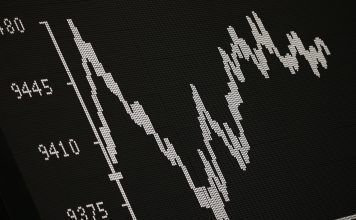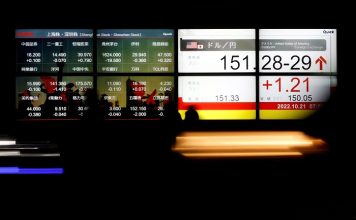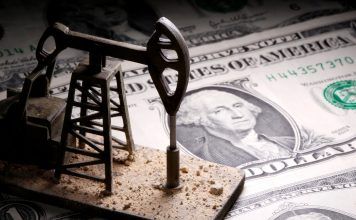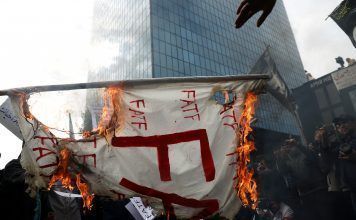By Kayhan Life Staff
On May 6, Iranian Interior Minister Ahmad Vahidi chaired a virtual meeting with all provincial governors on reforming the government subsidy scheme.
Mohsen Rezaei, Vice President of Iran for Economic Affairs, and Asghar Abolhassani Hastiyani, the Islamic Republic Central Bank Governor, also took part in the videoconference.
In comments reported by the Tehran-based Aftab News, Mr. Vahidi promoted the idea of paying subsidies to people directly and urged provincial governors to facilitate the speedy implementation of the scheme.
“The entire government seeks fair distribution through a direct payment scheme of subsidies,” Vahidi explained. “Governors play a key role in the speedy implementation of the plan by explaining it to the public and galvanizing the experts and labor unions. As the principal government representatives, governors must be more vigilant than before in controlling prices and combatting hoarding and smuggling of goods.”
[aesop_image img=”https://kayhanlife.com/wp-content/uploads/2022/05/2022-05-01T000000Z_1626921836_RC2EYT9A8L39_RTRMADP_3_IRAN-NUCLEAR-ECONOMY-scaled.jpg” panorama=”off” credit=”REUTERS./” align=”center” lightbox=”on” captionsrc=”custom” caption=”An Iranian man holds stacks of bread as he walks along a street in Tehran, Iran May 1, 2022. ” captionposition=”left” revealfx=”off” overlay_revealfx=”off”]
After the meeting, Vahidi said: “The subsidy policy is being reformed to ensure fair payments to people. The scheme calls for direct payment to the end-users and people instead of producers.”
In another meeting held with governors at the Ministry of Interior on May 9, Iran’s First Vice President Mohammad Mokhber Dezfouli outlined the government’s plan for revamping the subsidy scheme.
The intensive meetings with provincial governors on reforming subsidy policy reveal the government’s fear of the high cost of living, which could spark another wave of nationwide protest. There have been protests over the rising cost of living and high prices of goods in several cities in the southwestern province of Khuzestan and the southeastern province of Sistan and Baluchestan.
Several conservative and reformist politicians have warned President Ebrahim Raisi of possible protests and unrest.
The Ministry of Interior’s intervention in economic affairs — which are usually the responsibility of the Ministry of Economic Affairs and Finance — is an indication that Iran’s intelligence apparatus is concerned about public unrest.
Speaking to the Tehran-based Khabar Online news agency a few days before the protests in Khuzestan, Ali Shakouri-Rad, a reformist politician and a member of the Central Council in the Islamic Iran Participation Front, said: “Public outcry and criticisms are not reported in the media, so they [people] do not pour into streets to send a message. However, it does not take much effort to understand the public’s increasing dissatisfaction. It is surprising that officials do not hear people or take their dissatisfaction seriously.”
“We must be mindful that people’s patience is not limitless,” Shakouri-Rad warned. “It is unclear how people will react if economic pressure and hardship become intolerable.”
Government officials blame the high cost of goods on the end of product subsidies. They argue that the subsidies no longer allocated for particular products should be paid directly to people instead.
IRGC Officer Tells Tribunal of Khamenei’s Alleged Role in Suppressing 2019 Protests
Bread is one staple that has recently experienced a massive price hike.
The government’s price for a kilogram of industrial-grade wheat flour went up from $0.1 to $0.44 in just a few days. Products made from industrial-grade wheat flour, including bread and pasta, have experienced a massive price increase.
The price of traditional Iranian bread and baguettes has gone up significantly.
A report by Iranian state TV said the price for a 40-kilogram bag of industrial-grade wheat flour went from $3 to $25, causing a massive jump in the price of bread. The price of a loaf of “sangak,” a traditional Iranian bread, rose to nearly $1.
In the end, the government rolled out its bread subsidy scheme, trying to control prices.
Several senior politicians have asked the government to clarify how it plans to reform its subsidy scheme.
Ehsan Arkani, a member of the Majlis’ (Iranian Parliament) Planning and Budget Committee, recently said: “The government officials must explain the details of the scheme and how it will work. While the current subsidy card will remain, [the amount] will change. For instance, under the new scheme, the subsidy will cover seven-tenths [0.7] of the cost of a loaf of sangak bread.”
Bread consumption has increased significantly in recent years, especially among the economically disadvantaged segment of Iranian society, which cannot afford meat, vegetables, grains, and rice.
[aesop_image img=”https://kayhanlife.com/wp-content/uploads/2022/05/2022-05-01T000000Z_1496001830_RC2GYT96V47P_RTRMADP_3_IRAN-NUCLEAR-ECONOMY-scaled.jpg” panorama=”off” credit=”REUTERS./” align=”center” lightbox=”on” captionsrc=”custom” caption=”An Iranian woman walks down a street in Tehran, Iran May 1, 2022. ” captionposition=”left” revealfx=”off” overlay_revealfx=”off”]
It is unclear what “consumer model” the government has used to calculate the bread subsidy of seven-tenths (0.7) for each person. In 2013, the Ministry of Health came up with a similar figure for bread consumption.
“The proposed scheme will offer preferred currency exchange, credit cards, and fuel subsidy to consumers,” Mohammad Reza Pour-Ebrahimi, a Majlis Economic Committee member, recently said. “Bread and medicine are two products that are vital to everyone, but no decisions have been made on their data classification.”
The preferred currency exchange will help the importers of raw materials who should pass the savings to consumers.
Meanwhile, prices of other goods continue to soar.
“The government plans to change the way bread is sold by enabling people to buy it, using their bank cards with their national identity cards,” the Tehran-based Hamshahri newspaper reported on May 9. “The government must also decide how to calculate subsidies for eggs, meat, poultry, cooking oil, and dairy products. The government’s economic teams have concluded that subsidies for these products should differ from the bread subsidy.”
“The Planning and Budget Organization, the Ministry of Agriculture Jihad, and the Ministry of Industry, Mine and Trade have submitted their proposals to President [Ebrahim Raisi] on compensatory subsidies and elimination of foreign currency exchange [rate] of 42,000 [rials to a U.S. dollar],” the reported added. “The president will announce the final figure for compensatory cash subsidy after an expert study of the proposals. Under the scheme, the subsidies will be paid to people according to the ratified 2022-23 government budget.”










